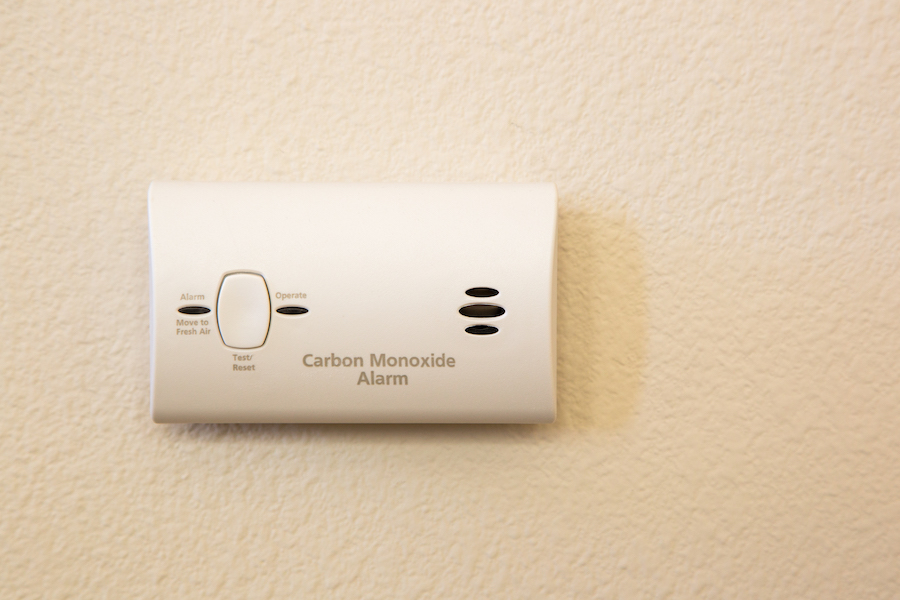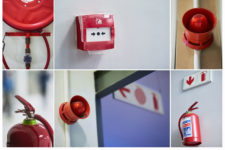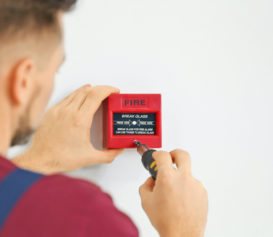Extension Details
The city just announced an extension to Local Law 191 of 2018 – a mandate requiring specific commercial buildings with fire alarm systems to install carbon monoxide detectors.
A bill proposed by the City Council was approved on 12/17/20, and expected to become law on 1/18/21. Now, property owners in this group have until July 1, 2021 to complete required installations. This is an update from the previous deadline of January 1, 2021 – see the city’s Service Notice for more details.
Compliance Requirements
Buildings that must comply with this requirement are properties equipped with a fire alarm system containing the following occupancy groups:
- A-, A-2, and A-3 (Assembly)
- Assembly uses, usually with fixedseating, intended for the production and viewing of the performing arts or motion pictures including, but not limited to:
Motion picture theaters, Symphony and concert halls, Television and radio studios admitting an audience, Theaters - Assembly uses intended for food and/or drink consumption including, but not limited to: Banquet halls, Cabarets, Cafeterias (except as provided for in A-3), Dance halls, Night clubs, Restaurants, Taverns and bars
- Assembly uses intended for worship, recreation or amusement and other assembly uses not classified elsewhere in Group A including, but not limited to: Amusement arcades, Art galleries, Bowling alleys, Cafeterias for children up to and including the 12th grade, Classrooms and instructional rooms with 75 persons or more; such rooms with fewer than 75 persons shall be classified as Group B or E, Community halls, Courtrooms, Custodial care facilities with 75 or more persons, providing care to persons over the age of 2, where no more than four occupants are incapable of responding to an emergency situation without physical assistance from staff, Dance studio or instruction (not including food or drink consumption), Exhibition halls, Funeral parlors, Gymnasiums (without spectator seating), Religious houses of worship, Indoor swimming pools (without spectator seating), Indoor tennis courts (without spectator seating), Lecture halls, Museums, Waiting areas in transportation terminals, Pool and billiard parlors, School auditoriums
- Assembly uses, usually with fixedseating, intended for the production and viewing of the performing arts or motion pictures including, but not limited to:
- Group B (Business)
- See a full list of included property types here, on page 3
- Group M (Mercantile)
-
Mercantile Group M occupancy includes, among others, the use of a building or structure or a portion thereof, for the display and sale of merchandise, and involves stocks of goods, wares or merchandise incidental to such purposes and accessible to the public. Mercantile occupancies shall include, but not be limited to, the following:Department stores, Drug stores, Markets, Motor fuel-dispensing facilities, Retail or wholesale stores, Sales rooms
-
As a reminder, installed devices must have:
- built-in sounder bases
- transmit a signal to a central supervising station
- comply with the city Code
- They are not required to be installed in the kitchens of these buildings
Of course, the DOB encourages building owners to comply as soon as possible before the deadline for safety reasons.
Installation Best Practices Using InCheck
If you’re an InCheck user, it’s easy to make sure alarms are installed everywhere they need to be. Teams we’re working with have created Workflows detailing how they want installations performed, including snapping a picture of the device once it’s in place. That way, all the details are saved in your InCheck account and can be referenced any time you need to verify compliance.
You can also list each device as an asset for each building, tracking the date of installation, and any subsequent inspections, checks, or modifications.
Questions? Don’t hesitate to reach out to our team – we’re happy to get you set up and started with an installation Workflow.




